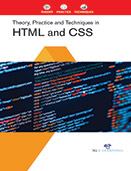Computer Science

Since the early days of web design, HTML has been the standard for professional websites. It stands for Hypertext Markup Language and can be quite confusing to someone who has no experience using it. HTML is the foundation of all other front-end languages. It controls the content. The content is what users come to your web-site or app for. The quality of the content along with how it is styled determines how long they will stay. Be a master of HTML before you jump into front end development programming languages. HTML is the language, or code, used to edit and position the text, images, frames and other web page elements. CSS was created to allow designers to have even more creativity and control over their designs. Today there is more than just one type of Internet browser to design for and this can be tricky and time consuming for HTML designers. These save users time, effort and most likely money when they are creating sites. Also, CSS encourages less effort by allowing designers to create style sheets. This means when an edit is made to one page, all other affected changes are automatically made. This keeps designers from having to make multiple edits for large, detailed websites. CSS is not really taking the place of HTML. It is generally used as an enhancement, not a substitute. HTML is still the perfect type of coding for the main structure of a site.
This book “Theory, Practice and Techniques in HTML and CSS” will teach you how to build hand-crafted web pages using well-structured XHTML for content and CSS for presentation. A guide to Web design basics describes how the Web and Web pages work, building HTML pages, using CSS for presentation, using JavaScript in Web design, and creating Web graphics.